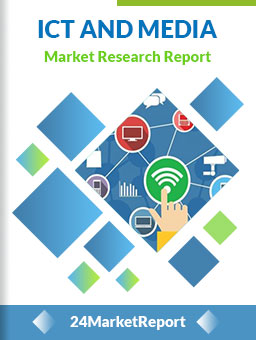
COMPANIES COVERED
OnSembleDownload FREE Report Sample
Download Free sampleDefinition
Employee Intranet Software refers to a secure, private digital workspace that functions as an organization’s internal hub for communication, collaboration, content management, and knowledge sharing. Unlike public internet portals, an intranet is restricted to authorized users—typically company employees—who access it via secure login credentials. Modern employee intranets consolidate features such as document repositories, social feeds, project hubs, feedback tools, learning modules, and integrations with third‑party applications (e.g., HRIS, CRM, or productivity suites). This unifies scattered workflows, reduces email dependency, and aligns distributed teams by providing a single source of truth for corporate resources, announcements, and culture‑building initiatives.
Market Size
Global Employee Intranet Software market size was estimated at USD 6969 million in 2024 and is projected to reach USD 14047.59 million by 2032, exhibiting a CAGR of 8.10% during the forecast period.
North America accounts for roughly 30 % of the global market (USD 2.077 billion), poised for 6.94 % CAGR as enterprises upgrade legacy portals to cloud‑native, mobile‑first intranets.
From 2020 to 2024, the market expanded at a 7.6 % average annual rate, driven by increased SaaS penetration and venture‑funded disruptors. Growth has been fastest among SMEs, whose share rose from 28 % to 34 % of total spending thanks to subscription pricing and low‑code deployment options. By 2030, Asia‑Pacific is expected to eclipse Europe as the second‑largest region due to rapid digital transformation across India and Southeast Asia.
To know more about market statistics, Download a FREE Sample copy
Market Dynamics (Drivers, Restraints, Opportunities, and Challenges)
Drivers
Hybrid & Remote Work Paradigm: COVID‑19 catalyzed permanent flexibility policies, creating sustained demand for digital hubs that foster connectivity across geographies and time zones.
Employee Experience (EX) Investments: Firms recognize that intuitive intranets reduce turnover by improving onboarding, engagement, and knowledge retention.
Integration Ecosystems: RESTful APIs and out‑of‑box connectors promote intranet adoption by embedding existing apps (Microsoft 365, Slack, Salesforce) into a single interface.
Rise of Cloud & Low‑Code Platforms: Cloud hosting lowers infrastructure costs, while drag‑and‑drop builders empower non‑technical teams to maintain content without IT tickets.
Restraints
Change Management Hurdles: Organizational resistance and poor user adoption can undermine return on investment.
Security & Compliance Concerns: Handling sensitive HR or financial data necessitates rigorous access controls and regional data‑residency compliance (e.g., GDPR, CCPA).
Feature Overload: Bloated portals risk confusing users and reducing productivity if not carefully prioritized.
Opportunities
AI‑Driven Personalization: Machine learning can curate news feeds and knowledge resources, boosting relevance and engagement.
Vertical‑Specific Solutions: Tailored intranets for healthcare, education, or retail address niche regulatory and workflow needs.
Analytics & Sentiment Insights: Advanced dashboards that correlate usage metrics with employee engagement KPIs create upsell potential.
Challenges
Vendor Differentiation: Commoditization risks intensify as major collaboration suites bundle intranet‑like features.
Data Migration Complexity: Porting legacy documents, permissions, and taxonomy demands meticulous planning, particularly for large enterprises.
Evolving Tech Stack: Maintaining compatibility with rapidly changing SaaS ecosystems requires continuous development resources.
Regional Analysis
North America
Europe
Asia‑Pacific
South America
Middle East & Africa
Competitor Analysis (in brief)
Market players fall into three clusters:
Specialized Intranet Vendors: Simpplr, ThoughtFarmer, Jostle focus on UX and AI‑driven content personalization.
Collaboration Suite Extensions: Bonzai and Hub Intranet layer intranet capabilities onto Microsoft SharePoint, accelerating time‑to‑value for Office 365 customers.
Enterprise Social Platforms: Jive‑n and tibbr offer internal social networking with activity streams and gamification.
Differentiators include mobile‑first design, integration breadth, AI search, and low‑code customization. Partnerships with HR tech (Workday), ITSM (ServiceNow), and identity providers (Okta) build ecosystem stickiness.
Global Employee Intranet Software: Market Segmentation Analysis
Employee Intranet Software Market provides a deep insight into the global Employee Intranet Software, covering all its essential aspects. This ranges from a macro overview of the market to micro details of the market size, competitive landscape, development trend, niche market, key market drivers and challenges, SWOT analysis, value chain analysis, etc. The analysis helps the reader to shape the competition within the industries and strategies for the competitive environment to enhance the potential profit. Furthermore, it provides a simple framework for evaluating and assessing the position of the business organization. The report structure also focuses on the competitive landscape of the Global Employee Intranet Software. Employee Intranet Software Market introduces in detail the market share, market performance, product situation, operation situation, etc., of the main players, which helps the readers in the industry to identify the main competitors and deeply understand the competition pattern of the market. In a word, Employee Intranet Software Market is a must‑read for industry players, investors, researchers, consultants, business strategists, and all those who have any kind of stake or are planning to foray into the Employee Intranet Software in any manner.
Market Segmentation (by Application)
Market Segmentation (by Type)
Key Company
Geographic Segmentation
FAQ
What is the current market size of Employee Intranet Software?
Which are the key companies operating in the Employee Intranet Software market?
What are the key growth drivers in the Employee Intranet Software market?
Which regions dominate the Employee Intranet Software market?
What are the emerging trends in the Employee Intranet Software market?
Key Benefits of This Market Research:
Industry drivers, restraints, and opportunities covered in the study
Neutral perspective on the market performance
Recent industry trends and developments
Competitive landscape & strategies of key players
Potential & niche segments and regions exhibiting promising growth covered
Historical, current, and projected market size, in terms of value
In-depth analysis of the Employee Intranet Software Market
Overview of the regional outlook of the Employee Intranet Software Market:
Key Reasons to Buy this Report:
Access to date statistics compiled by our researchers. These provide you with historical and forecast data, which is analyzed to tell you why your market is set to change
This enables you to anticipate market changes to remain ahead of your competitors
You will be able to copy data from the Excel spreadsheet straight into your marketing plans, business presentations, or other strategic documents
The concise analysis, clear graph, and table format will enable you to pinpoint the information you require quickly
Provision of market value data for each segment and sub-segment
Indicates the region and segment that is expected to witness the fastest growth as well as to dominate the market
Analysis by geography highlighting the consumption of the product/service in the region as well as indicating the factors that are affecting the market within each region
Competitive landscape which incorporates the market ranking of the major players, along with new service/product launches, partnerships, business expansions, and acquisitions in the past five years of companies profiled
Extensive company profiles comprising of company overview, company insights, product benchmarking, and SWOT analysis for the major market players
The current as well as the future market outlook of the industry concerning recent developments which involve growth opportunities and drivers as well as challenges and restraints of both emerging as well as developed regions
Includes in-depth analysis of the market from various perspectives through Porters five forces analysis
Provides insight into the market through Value Chain
Market dynamics scenario, along with growth opportunities of the market in the years to come
6-month post-sales analyst support
Customization of the Report
In case of any queries or customization requirements, please connect with our sales team, who will ensure that your requirements are met.
Chapter Outline
Chapter 1 mainly introduces the statistical scope of the report, market division standards, and market research methods.
Chapter 2 is an executive summary of different market segments (by region, product type, application, etc), including the market size of each market segment, future development potential, and so on. It offers a high-level view of the current state of the Employee Intranet Software Market and its likely evolution in the short to mid-term, and long term.
Chapter 3 makes a detailed analysis of the market's competitive landscape of the market and provides the market share, capacity, output, price, latest development plan, merger, and acquisition information of the main manufacturers in the market.
Chapter 4 is the analysis of the whole market industrial chain, including the upstream and downstream of the industry, as well as Porter's five forces analysis.
Chapter 5 introduces the latest developments of the market, the driving factors and restrictive factors of the market, the challenges and risks faced by manufacturers in the industry, and the analysis of relevant policies in the industry.
Chapter 6 provides the analysis of various market segments according to product types, covering the market size and development potential of each market segment, to help readers find the blue ocean market in different market segments.
Chapter 7 provides the analysis of various market segments according to application, covering the market size and development potential of each market segment, to help readers find the blue ocean market in different downstream markets.
Chapter 8 provides a quantitative analysis of the market size and development potential of each region from the consumer side and its main countries and introduces the market development, future development prospects, market space, and capacity of each country in the world.
Chapter 9 shares the main producing countries of Employee Intranet Software, their output value, profit level, regional supply, production capacity layout, etc. from the supply side.
Chapter 10 introduces the basic situation of the main companies in the market in detail, including product sales revenue, sales volume, price, gross profit margin, market share, product introduction, recent development, etc.
Chapter 11 provides a quantitative analysis of the market size and development potential of each region during the forecast period.
Chapter 12 provides a quantitative analysis of the market size and development potential of each market segment during the forecast period.
Chapter 13 is the main points and conclusions of the report.

Speak to our Custom Research Team and get the Custom Research in a budget
Custom ResearchFrequently Asked Questions ?
A license granted to one user. Rules or conditions might be applied for e.g. the use of electric files (PDFs) or printings, depending on product.
A license granted to multiple users.
A license granted to a single business site/establishment.
A license granted to all employees within organisation access to the product.
Upto Working 24 to 48 hrs
Upto 72 hrs max - Weekends and Public Holidays
Online Payments with PayPal and CCavenue
Wire Transfer/Bank Transfer
Hard Copy




 Industry Market Size
Industry Market Size SWOT Analysis
SWOT Analysis Industry Major Players
Industry Major Players Revenue Forecasts
Revenue Forecasts Historical and Forecast Growth
Historical and Forecast Growth Profitability Analysis
Profitability Analysis
























